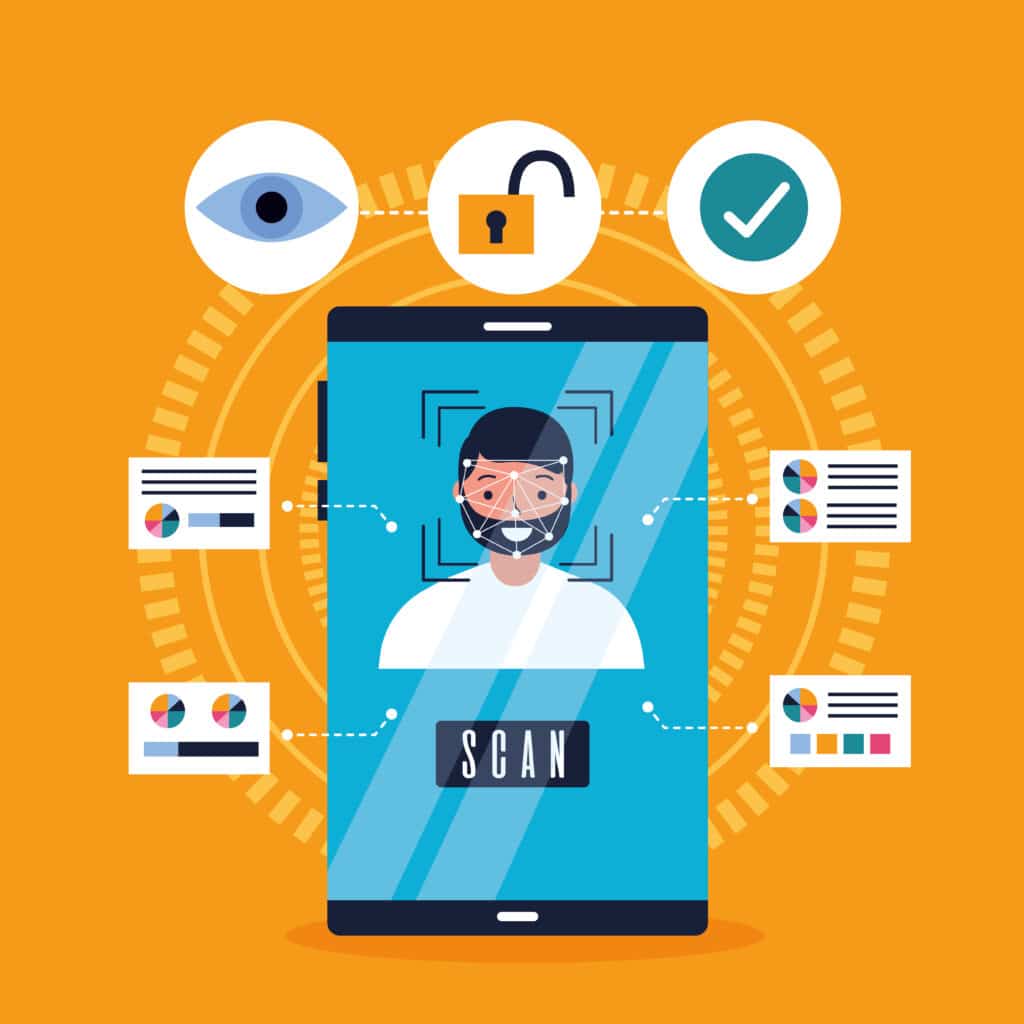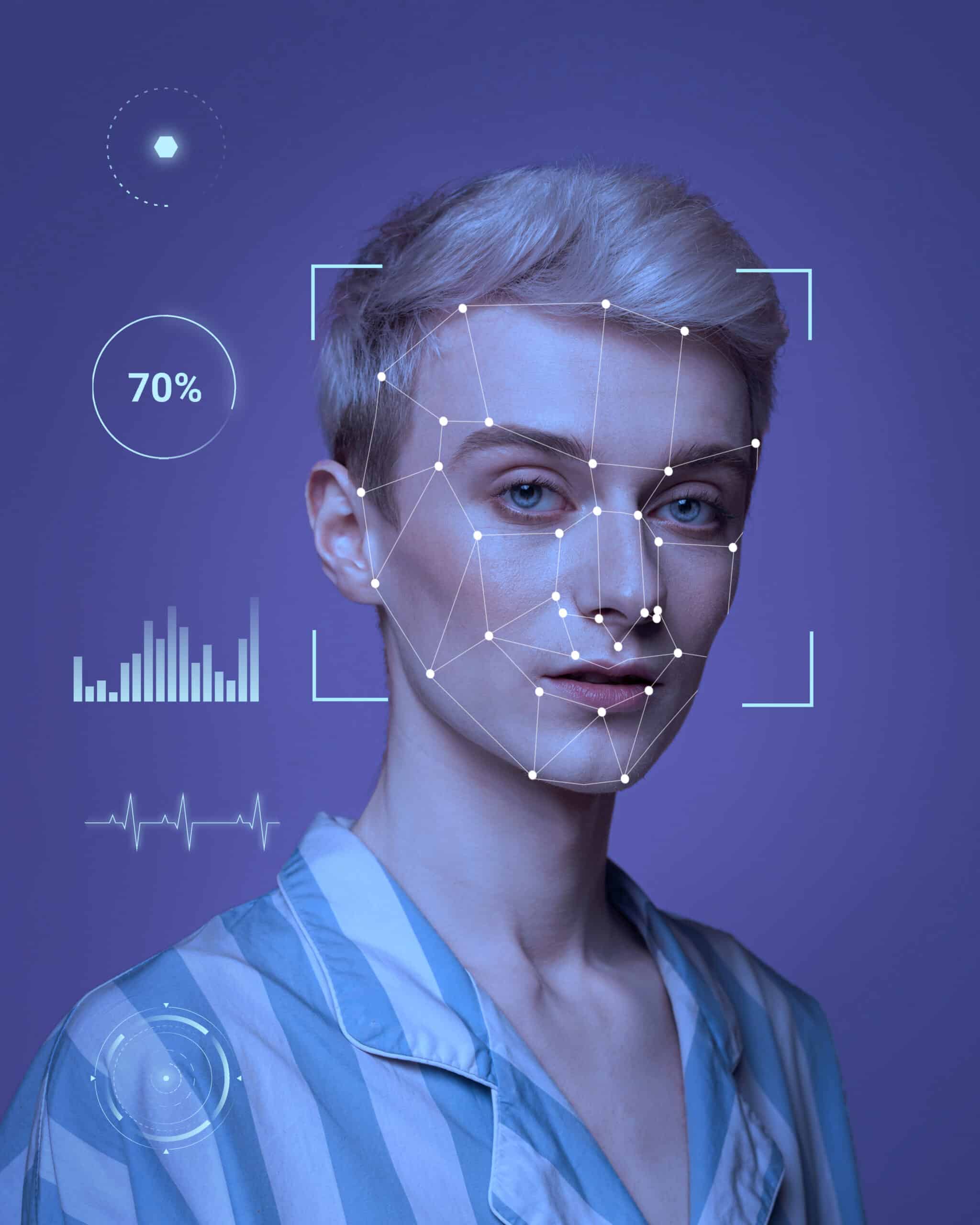Unlocking the Future: The Power of Facial Recognition Identity Verification


Are you tired of remembering multiple passwords and worrying about the security of your personal information? Embracing biometric authentication, particularly facial recognition identity verification, offers a cutting-edge solution to these concerns. We will explore the benefits of biometric authentication, such as increased security, improved user experience, future of facial recognition and cost savings.
We will also delve into concerns and criticisms surrounding facial recognition, including privacy issues and potential biases.
Learn more about how industries like banking, healthcare, and government are adopting this technology, and how businesses can effectively implement biometric authentication.
What Is Biometric Authentication?
Biometric authentication is a cutting-edge security technology that utilizes unique physical or behavioral traits, such as facial features, to confirm a user’s identity.
By relying on distinct characteristics like facial recognition, iris scans, fingerprints, and voice patterns, biometric authentication offers a higher level of security compared to traditional password-based methods. It ensures a more accurate and reliable identification process, reducing the risks associated with unauthorized access.
This personalized approach enhances user verification, making it significantly harder for malicious actors to breach sensitive information. The combination of biometric authentication and individualized identification methods strengthens cybersecurity measures and safeguards critical data effectively.
How Does Facial Recognition Identity Verification Work?
Facial recognition identity verification operates by analyzing specific facial features captured by biometric scanners to validate a user’s identity securely.
This process involves several key steps to ensure accurate identification. Initially, the system captures an image of the user’s face, which is then converted into a digital template for comparison. Next, the biometric data extracted from the facial features goes through advanced algorithms that map unique characteristics such as the distance between eyes, nose, and mouth. These precise measurements play a vital role in the authentication process, enhancing security measures to protect user identities effectively.
What Are the Benefits of Embracing Biometric Authentication?
Embracing biometric authentication offers a myriad of benefits, including enhanced digital security, improved user privacy, and the implementation of multifactor authentication using advanced technologies.
Biometric scanners, such as fingerprint recognition and facial biometrics, provide a high level of security by utilizing unique physical characteristics to verify the identity of users. This reduces the risk of unauthorized access and minimizes the threat of identity theft. The integration of biometric authentication enhances user privacy as biometric data is stored securely and cannot be easily replicated or stolen. With the added layer of security through multifactor authentication, companies can ensure that access is granted only to authorized individuals, adding an extra level of protection to sensitive information and transactions.
Increased Security
One of the key benefits of biometric authentication is the heightened security it provides through secure access control, accurate personal identification, and the utilization of facial images for a robust identity verification process.
Biometric authentication mechanisms offer an additional layer of security by incorporating unique physical characteristics like fingerprints, iris scans, and voice patterns, making it significantly harder for unauthorized individuals to gain access. The precision of personal identification using biometric data minimizes the risk of identity theft or fraud, as these biometric features are incredibly difficult to replicate or falsify.
Facial recognition technology has emerged as a powerful tool in simplifying the identity verification process, enabling seamless and efficient authentication while ensuring enhanced protection against unauthorized access.
Improved User Experience
Biometric authentication enhances the user experience by offering robust identity theft prevention measures, convenient facial ID recognition, seamless user authentication processes, precise biometric verification methods, and accurate facial matching capabilities.
Facial ID recognition, for instance, brings a sense of ease and efficiency to users as they can simply glance at their device to gain access, eliminating the need to remember complex passwords. The streamlined user authentication procedures not only save time but also reduce the frustration associated with forgotten passwords.
Biometric verification techniques ensure a high level of security by uniquely identifying individuals based on their physiological characteristics, making it extremely difficult for unauthorized users to gain access. The effectiveness of facial matching processes further strengthens the security measures, reinforcing the trust users have in the authentication system.
Cost Savings
Implementing biometric authentication not only enhances security but also results in significant cost savings through the establishment of secure identities, facial authentication protocols, robust data protection measures, strengthened cybersecurity practices, and efficient face detection technologies.
These advancements in biometric authentication contribute to reducing costs associated with traditional methods of access control, such as password resets, card replacements, and potential breaches due to stolen or forgotten credentials.
By streamlining the process of identity verification, facial recognition systems ensure a higher level of accuracy in authenticating individuals, thereby minimizing the risk of unauthorized access.
This seamless integration of biometric solutions not only optimizes operational efficiency but also fortifies organizational defenses against evolving cyber threats.
What Are the Concerns and Criticisms of Facial Recognition Identity Verification?
Despite its advantages, facial recognition identity verification faces concerns and criticisms related to user validation accuracy, identity confirmation reliability, biometric identification vulnerabilities, secure login challenges, and the thorough analysis of facial features.
These concerns stem from the potential for errors in the recognition process leading to mistaken identities or unauthorized access. User validation accuracy poses a critical risk if not properly calibrated, as it may result in security breaches or privacy infringements. The reliance on facial features for identity confirmation raises doubts about the system’s resilience to spoofing attempts. Addressing these vulnerabilities requires robust security measures and continuous advancements in technology to enhance secure authentication methods in facial recognition systems.
Privacy Concerns
Privacy concerns arise in facial recognition identity verification due to uncertainties in identity validation processes, potential vulnerabilities in facial security measures, user authorization complexities, the intricacies of face scanning technologies, and the nuances of identity authentication procedures.
These issues highlight the challenges faced by systems utilizing facial recognition for identity verification. As technology advances, ensuring foolproof security measures becomes imperative. The intricacies of scanning facial features raise questions about the accuracy and reliability of such systems.
User authorization layers add complexity to the process and amplify the need for robust protection mechanisms. Identity authentication nuances further complicate the landscape, emphasizing the importance of continuously evolving identity protection technology for secure verification processes.
Inaccuracies and Biases
Inaccuracies and biases in facial recognition identity verification systems can stem from shortcomings in biometric security protocols, limitations of facial recognition software, challenges in achieving secure verification processes, complexities in facial identification mechanisms, and issues with identity access management.
These factors collectively contribute to the hurdles faced in ensuring reliable and accurate biometric recognition. One of the primary challenges lies in the innate biases embedded within facial recognition algorithms, which can result in disparities in identifying individuals accurately.
The complexities in training datasets and the varied quality of images used for recognition pose significant obstacles in achieving robust and foolproof authentication processes. Addressing these issues is crucial to enhance the overall efficacy and reliability of facial recognition technology in identity verification.
Potential for Misuse
The potential for misuse in facial recognition identity verification lies in the exploitation of biometric systems, misuse of facial data, challenges in ensuring secure recognition methods, complexities in user verification processes, and issues related to identity authorization procedures.
Facial recognition technology, while offering convenience and enhanced security, also brings a host of potential risks. For instance, the exploitation of biometric systems can lead to unauthorized access and identity theft. The misuse of facial data raises concerns about privacy violations and unauthorized tracking. Ensuring secure recognition mechanisms becomes even more crucial in the face of increasing cyber threats and vulnerabilities. The complexities in user verification processes pose a challenge in maintaining accurate and reliable identity verification.
Addressing these issues is paramount to safeguarding individuals from identity fraud and misuse of their facial information.
What Industries Are Adopting Biometric Authentication?
Various industries are increasingly embracing biometric authentication technologies such as facial recognition for secure user validation, accurate biometric recognition, streamlined secure authentication processes, leveraging advanced face recognition technology, and ensuring efficient user validation procedures.
By integrating facial recognition systems, organizations can enhance security protocols through the unique features of each individual’s face, creating a more robust and personalized authentication experience. The adoption of advanced technologies not only increases security measures but also simplifies user interactions, leading to a seamless and user-friendly authentication process. Incorporating facial recognition technology in identity verification solutions ensures a high level of accuracy, reducing the risk of unauthorized access and ensuring that confidential information remains protected across various sectors, from finance and healthcare to law enforcement and retail.
Banking and Finance
The banking and finance sector is at the forefront of adopting biometric authentication solutions, leveraging advanced facial recognition technology for secure identity verification, implementing robust user identification processes, and enhancing security through innovative identity authentication methods.
This shift towards biometric authentication has significantly improved security measures within the industry by replacing traditional password-based systems with more reliable and user-friendly methods. Facial recognition technology, in particular, has gained traction for its high level of accuracy and convenience. Financial institutions are increasingly investing in biometric solutions to combat fraud, streamline customer interactions, and ensure seamless digital experiences. By incorporating biometric identity verification, banks and financial firms are not only enhancing security protocols but also enhancing the overall customer experience in an increasingly digital-centric environment.
Healthcare
In the healthcare sector, biometric authentication plays a crucial role in safeguarding sensitive data through the implementation of robust identity protection measures, utilization of facial scans for verification, protection of biometric data, enforcement of secure access control protocols, and the deployment of advanced identity verification technology.
This advanced technology not only enhances security within healthcare settings but also streamlines the authentication process for both patients and healthcare professionals. By using facial scans for verification purposes, individuals can access their medical records and sensitive information with a simple scan, eliminating the need for traditional passwords that can be easily compromised.
Safeguarding biometric data ensures that personal information remains confidential and protected against cyber threats, enhancing overall data security and promoting trust in the healthcare system.
Government and Law Enforcement
Government and law enforcement agencies leverage biometric authentication technologies to enhance public safety through advanced facial feature recognition capabilities, streamlined user authorization processes, efficient face detection mechanisms, stringent identity authentication protocols, and strengthened biometric security measures.
By implementing facial recognition technologies, these institutions can quickly verify individuals’ identities based on unique facial features, enabling swift access to secure areas and critical information. The integration of biometric security not only bolsters data protection but also ensures a high level of accuracy in identifying individuals, reducing the risk of fraud and unauthorized access. The efficiency improvements in face detection enhance surveillance capabilities, enabling prompt responses to potential security threats and criminal activities.
How Can Businesses Implement Biometric Authentication?
Businesses can implement biometric authentication by adopting cutting-edge technologies such as biometric face recognition systems, ensuring secure facial recognition processes, deploying advanced identity protection technologies, integrating biometric identity authentication methods, and leveraging facial recognition solutions for enhanced security measures.
By incorporating biometric face recognition systems, businesses can enhance user identity protection and cybersecurity by requiring unique facial characteristics for authentication. Secure facial recognition protocols should be established to ensure data privacy and prevent unauthorized access.
It is important for companies to deploy identity protection technologies that encrypt biometric data and implement multi-factor authentication for added security. Integrating biometric identity authentication procedures helps verify user identities accurately, reducing the risks of identity theft and fraud.
Leveraging facial recognition solutions can significantly heighten overall security levels within organizations.
Choosing the Right Technology
- Selecting the appropriate biometric authentication technology involves assessing identity validation processes.
- Determining the efficacy of biometric identity verification methods.
- Evaluating facial biometric authentication capabilities.
- Prioritizing user identity protection measures.
- Optimizing the identity validation process for seamless user authentication.
These steps are crucial in ensuring a secure login process that offers a high level of protection against unauthorized access. Identity validation assessments help in confirming the identity of users accurately, enhancing the overall security of the system.
Biometric identity verification methods such as fingerprint scanning, iris recognition, and voice recognition offer reliable and unique ways to authenticate users. When it comes to facial biometric authentication systems, their advanced algorithms and facial recognition technology provide a convenient and secure way to verify user identities.
Integrating robust user identity protection measures like encryption and multi-factor authentication further enhances the security of the authentication process. By optimizing identity validation procedures, organizations can streamline user authentication, improving efficiency while maintaining a high level of security.
Ensuring Compliance with Regulations
Compliance with regulatory requirements is essential when implementing biometric authentication systems, necessitating the secure management of biometric systems, protection of facial data, deployment of secure recognition protocols, verification of user identities, and adherence to identity authorization standards.
Ensuring regulatory compliance in biometric authentication implementation is crucial for maintaining the integrity and security of user verification processes. By adhering to established regulations, organizations can mitigate risks associated with unauthorized access and data breaches. Securely managing biometric data and deploying robust recognition mechanisms help safeguard sensitive information, while verifying user identities enhances overall system security.
Strict adherence to identity authorization standards not only protects user privacy but also strengthens trust in the authentication process. Regulatory compliance is the cornerstone of establishing secure access control through biometric authentication.
Educating and Training Employees
Educating and training employees on biometric authentication involves familiarizing them with biometric recognition principles, facilitating facial comparison techniques, guiding them through secure authentication processes, introducing face recognition technology applications, and ensuring effective user validation procedures.
To enhance employee understanding of biometric recognition principles, trainers should explain how biometric data is captured, processed, and stored securely. Incorporating interactive sessions demonstrating the reliability and efficiency of facial comparison techniques can heighten comprehension. Security protocols for secure authentication processes must be emphasized, along with the importance of regularly updating access credentials.
Introducing real-world examples of face recognition technology applications within identity verification solutions can illustrate the practical benefits. Conducting simulated scenarios to test user validation methods in a controlled environment can help employees grasp the significance of accurate and secure identity verification processes.
Frequently Asked Questions
What is biometric authentication?
Biometric authentication is a security method that uses physical or behavioral characteristics, such as facial features, fingerprints, or voice patterns, to verify a person’s identity.
How does facial recognition identity verification work?
Facial recognition identity verification uses sophisticated algorithms to analyze and compare an individual’s facial features with a pre-existing database to confirm their identity.
How secure is facial recognition identity verification?
Facial recognition identity verification is considered one of the most secure forms of biometric authentication, as it relies on a unique and difficult to replicate physical characteristic.
Can facial recognition be fooled by a photograph or video?
Advanced facial recognition technology can detect and prevent fraudulent attempts using photographs or videos by analyzing the 3D structure of a face and movement patterns.
Is facial recognition identity verification legal?
Yes, facial recognition identity verification is legal in most countries, but there may be specific regulations and guidelines that companies must follow when implementing this technology.
How is facial recognition identity verification being used in different industries?
Facial recognition identity verification is being used in various industries, including banking, healthcare, and law enforcement, to enhance security and improve efficiency in identity verification processes.



